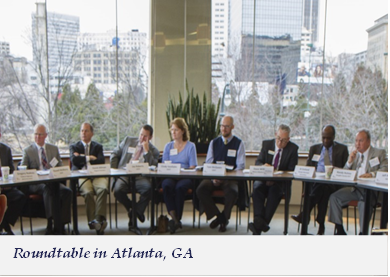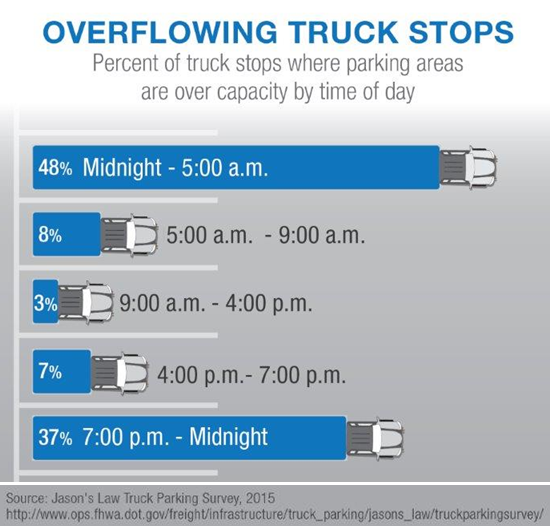National Freight Strategy Framework
Section II: Beyond Traffic Freight Economy Roundtable Stories and Themes

Since the release of the draft Plan, DOT leaders from Federal Motor Carrier Safety Administration, Federal Railroad Administration, Maritime Administration, and the Saint Lawrence Seaway Development Corporation joined FHWA Administrator Gregory Nadeau throughout a series of 25 roundtable conversations with the business community, public and private sector transportation professionals, and several State and Metropolitan Planning Organization (MPO) officials to discuss freight issues and best practices in their respective States and regions affecting the local, regional and national economy. These discussions were designed to amplify the messages of the Beyond Traffic framework, collect input to inform the National Freight Strategic Plan, and share updates on new FAST Act programs including funding opportunities.
From these engaging meetings, a series of stories emerged, encapsulating the following recurring themes:
- Efficiency of Freight Movement
For both the public and private sector participants, efficiency was not only critical to their operation but was always a top priority. Three top challenges emerged:
- The System – Infrastructure in need of repair;
- Capacity – Stretched now and continues to be tested; and
- Congestion – At an all-time peak in some locations and modes of transportation.
Each challenge, whether at a port of entry, at-grade rail crossings, or the movement of a truck in and out of a facility, impacts efficiency and the overall economy.
-
Modal Connectivity and Coordinated Planning
The discussions highlighted how critical it was to have industry represented at the decision making table to help provide operational expertise and perspective on the needs and investment in freight at the state, local, and regional levels. Greater data-sharing is necessary for improved transportation and community planning.
-

Freight movement is critical to the economic health of communities, but can also pose also pose great challenges to the quality of life, safety and the overall efficiency of the nation's highways and local roads. The growth of e-commerce and overall increase in freight have made it more pressing for communities to find solutions to mitigate the impacts of truck movements, improve safety at highway rail grade crossings, address first-and-last-mile delivery, and handle local concentrations of freight activity. Among community impacts, truck parking is a prevalent safety concern relating both to the safety of the driver and of the public.
- Innovative Solutions and Emerging Technologies
The use of technology and innovation to move the freight economy into the 21st Century will be a game changer. Some of the innovative ideas raised at the meetings highlighted how the use of technology can help ease the delay at international border crossings; about the benefits and challenges of switching to of off-peak hours of operation at port terminals, and the use of GIS mapping for capturing and sharing truck parking information. Autonomous vehicles and facilities offer great potential to improve the efficiency, cost-effectiveness, and safety of freight movement in the coming decades.
Workforce Challenges and Job Opportunities
It is necessary for the public and private sector to continue to collaborate to ensure the development and retention of the freight workforce to keep pace with the growth in freight movement.
-
Communities, states and the private sector all expressed the desire to hear more from the federal government on freight issues.
The final Beyond Traffic Freight Economy Roundtable listening session, held in Washington, DC in October of 2016, utilized all multimedia tools on hand to reach the largest possible audience. Over 500 participated in person, on line, by sending email, contributing to the online message forum, or dialing in by phone. Participants watched and directed the content fielded by a panel of top officials from the key freight modes, who debated the issues of freight today and addressed questions posed from across the country. This capstone event marked a high point in public engagement, bookending U.S. Department of Transportation Secretary Anthony Foxx's Freight Summit that launched the feedback dialogue on the draft Plan in February of 2016 to frame the opportunities ahead as a result of the passage of the FAST Act and his vision for freight in America. For more information, visit the Freight Economy website (www.fhwa.dot.gov/freighteconomy).